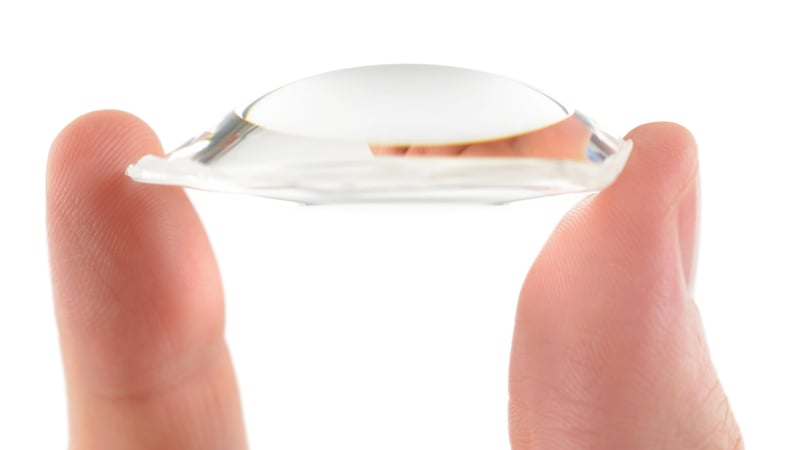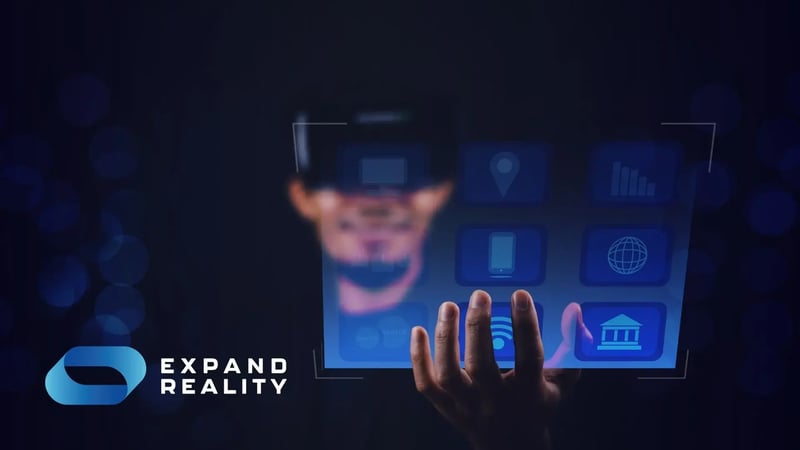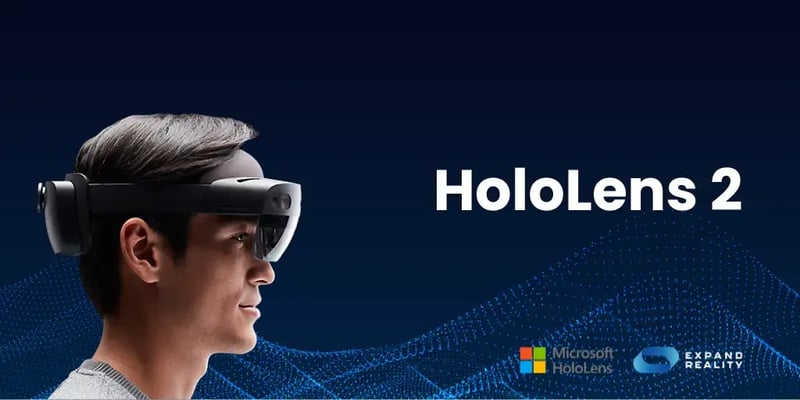
The difference between pancakes lenses and current fresnel lenses found on VR headsets
HTC Vive Flow, EM3 Ether, and Meta's upcoming Project Cambria all share a sleek, thin design and incorporate Pancake lens technology. So, how do Pancake optics differ from the traditional lenses used in current virtual reality headsets, and what does this mean for the future of VR headsets? This shift could signal advancements in the metaverse, virtual worlds, mixed reality, and immersive collaboration tools, such as Microsoft Hololens, Apple Vision, and Microsoft Mesh. With Pancake lenses enhancing optics and form factor, these devices could redefine the user experience in both personal and professional virtual environments.
The current Fresnel lenses
When consumers and enterprises not deeply engaged in VR/AR news think of virtual reality headsets, they often picture bulky "shoeboxes" strapped to the head. This perception persists despite design efforts to reduce the bulk since VR’s resurgence in 2012. Even technology enthusiasts and industry experts tend to focus on display specs—pixel density, refresh rates, colour accuracy—while overlooking another key component: the lenses.
Fresnel lenses, developed by Augustin Fresnel in the early 1800s and known as “the invention that saved a million ships,” work by directing and enhancing light, much like a lighthouse. The lens uses rings of crystalline prisms arranged in a beehive-like structure to reflect and refract light.
In virtual reality HMDs, this design creates a "lighthouse-beamed screen" effect, requiring a significant gap between the display and lens, thus adding bulk and weight to the headset. As industries embrace the metaverse, mixed reality, and spatial computing—seen in platforms like Microsoft Mesh and devices like Microsoft Hololens—streamlining this bulky design is crucial for the future of immersive experiences in the industrial metaverse and beyond.
The emergence of the Pancake lens design
In technology, there’s a clear trend: devices become more affordable and compact over time. This holds true for smartphones, laptops, chips, and now, VR and AR headsets.
Augmented reality (AR) is pushing toward affordability and slim designs, largely driven by advancements in waveguide technology. Meanwhile, future virtual reality (VR) headsets will likely evolve around Pancake lens technology.
Though Pancake optics may seem like a new concept, they’ve been used by the military and scientific community long before VR adopted them. The first Pancake VR headset prototype emerged in 2015 from eMargin, followed by Kopin’s "Kopin Elf" in 2017. More recently, companies like Huawei, HTC, Pico, and EM3 have either launched commercial Pancake-enabled headsets or showcased concept designs.
These Pancake-enabled VR headsets are redefining the perception of VR, shifting from bulky devices to sleek, fashionable wearables. This shift not only makes VR more accessible to the early majority of consumers but also expands the market, driving innovation across the industry. As the industrial metaverse grows, especially with platforms like Microsoft Mesh and devices like Microsoft Hololens, thinner, more powerful headsets will enhance mixed reality experiences for both enterprises and frontline workers worldwide.

In mid-June 2021, Kopin unveiled the P95, an all-plastic Pancake lens design optimised for their 2.6K x 2.6K OLED high-brightness micro displays. Dr. John C.C. Fan, CEO and founder of Kopin Corporation, highlighted that this new technology is "ideal for VR" and marks "a foundational milestone for the emerging VR markets." According to Fan, bulky, heavy headsets have long hindered consumer adoption, and this breakthrough aims to change that.
When comparing Fresnel lenses to Pancake lenses, several factors come into play: the light source, lens shape, and how the light travels through and exits the lens, as well as the wavelength of the light. Fresnel lenses offer a wider field of view but suffer from chromatic aberrations (ghosting and overlapping colours) and pincushion distortion, which requires real-time software calibration that consumes processing power.
Pancake optics, however, fold multiple lenses together, bouncing light within the glass or plastic. This allows for a slimmer design, reducing the space between the display and the user's eyes and eliminating distortion issues present with Fresnel lenses. Pancake lenses also do not exhibit chromatic aberration, freeing up processing power for other tasks.
However, Pancake lenses have lower light efficiency due to internal light bouncing, which can dim the perceived image. This is why high-brightness micro displays, like those mentioned by Fan, are essential for optimal performance. Additionally, Pancake lenses still struggle with ghosting.
Overall, Pancake lenses offer more advantages over Fresnel lenses, especially in terms of image quality and enabling thinner, lighter VR headsets. This innovation is critical as the VR market expands into the industrial metaverse, mixed reality, and collaborative platforms like Microsoft Mesh and Microsoft Teams. These advancements are poised to transform VR/AR solutions for the enterprise, frontline workers, and the broader metaverse world.

What is the difference between metaverse and VR?
The Metaverse refers to user-generated online spaces where individuals engage with computer-created environments and digital characters. Virtual reality (VR) fully immerses users in these simulated environments, while augmented reality (AR) integrates digital elements into the physical world.
In the context of the metaverse, platforms like Microsoft Hololens are shaping the future of mixed reality, allowing employees and colleagues to interact seamlessly with digital and real-world elements. These mixed reality offerings are transforming how we collaborate and engage in virtual worlds.

Is HoloLens a metaverse?
Microsoft's HoloLens is a mixed-reality device regarded as a key gateway to the metaverse. HoloLens allows users to create and interact with 3D objects and spaces as holograms. The HoloLens 2, in particular, is recognised as industrial metaverse technology, enabling real-time collaboration and immersive experiences for customers.
By integrating with Windows and other digital tools, HoloLens plays a crucial role in driving digital transformations across industries, reshaping how businesses engage with the metaverse and mixed-reality solutions.
Conclusion
Like augmented reality, virtual reality (VR) is heading toward a slimmer and lighter future. This design evolution is expanding the VR market by attracting casual consumers who may now be more inclined to adopt a VR headset. As a result, the virtual reality market will mature, leading to the growth of ancillary services that further advance the technology.
A key indicator of this trend was the release of the HTC Vive Flow, which emphasised stylish design and targeted a broader customer base, even incorporating non-tech elements like meditation. The driving force behind this shift is the Pancake lens design. While not a new concept, it is revolutionary for VR headsets, enabling sleeker designs that appeal to a wider audience while eventually detaching from the need for external devices like laptops or smartphones.
From 2024 and beyond, virtual reality is poised to mature both in hardware and use cases, particularly within the metaverse and industrial metaverse. This often-overlooked Pancake optics design will be the catalyst for these advancements, enhancing mixed reality experiences for employees and enabling the development of industrial metaverse solutions through platforms like Microsoft Hololens and the wider metaverse world.
Useful Links for Businesses
HR guide to upgrading work for employees work-life with technology
